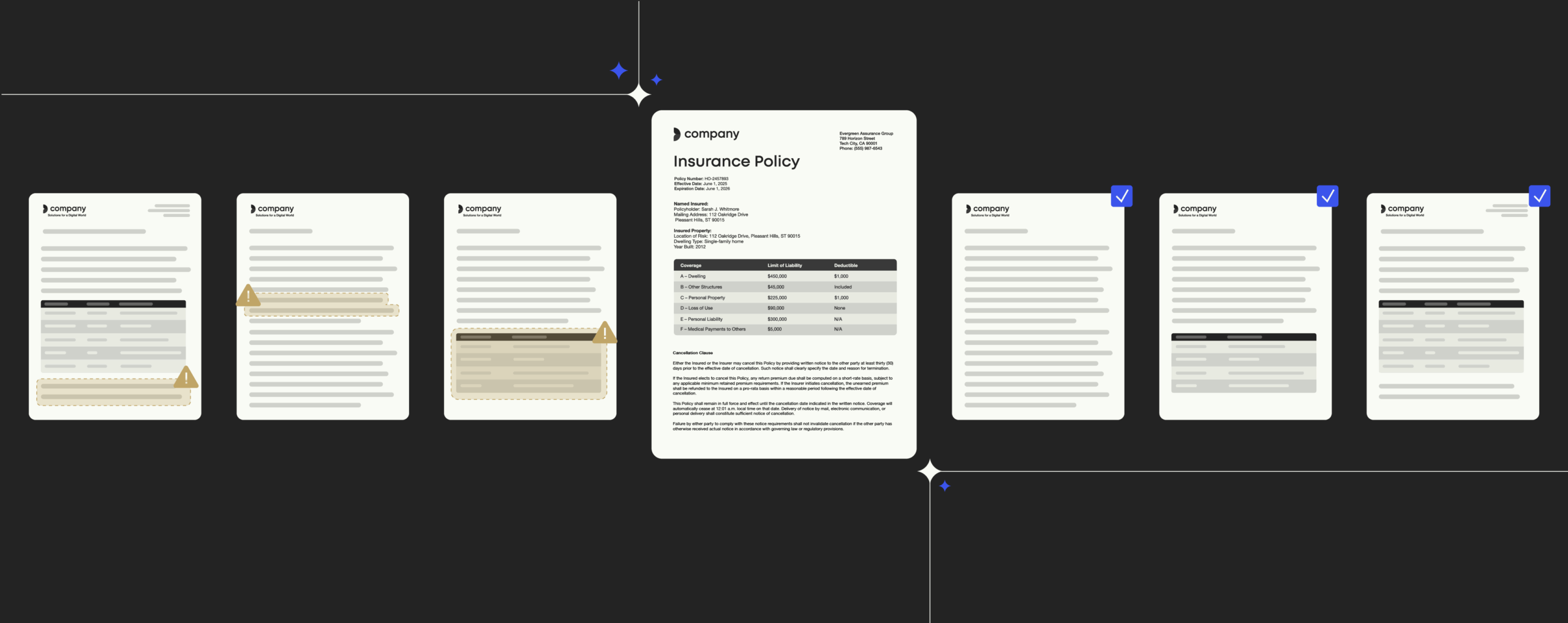Documents in healthcare: the importance and the complexities

Medical communication covers a wide variety of information types; the healthcare website you read to check your symptoms, the leaflet you pick up at your doctors’ practice, and the flyer you get through your door, to name just a few.
But it also covers communication that’s specific to individuals: letters detailing referrals, appointment requests, treatment follow-up plans, reminders about vaccinations or regular checks, discharge notes, and so many more.
Almost all of this communication has its roots in documents. Although more medical communication is happening digitally, for example, emails rather than letters, it’s still a document-heavy process. And this means that there are still some steps that you can take to improve document use and function for the benefit of your healthcare organization.
summary
Documents in healthcare
Healthcare organizations produce a huge number of documents, which form the basis for vital communication with patients. However, utilizing documents correctly to provide clear and consistent communication can be problematic. Find out how to remove the difficulties and improve your healthcare document communication.
Why are documents important in healthcare?
The importance of medical communication documents is that they are coming at a time in peoples’ lives filled with uncertainty. Medical communication happens when people are unwell, fear they are unwell or need health checks. All these scenarios are fraught with fear and uncertainty. It’s a time where a lot lies in the balance, and humans often fear the worse. That’s why the stakes are so high, and good communication is so important. And good communication begins in documents.
Although healthcare organizations are commonly viewed as relating to hospital trusts and branches, healthcare organizations responsible for manufacturing and research are also covered by this term. Their documentation purposes differ as they are involved in less direct communication with individuals, but instead more communication about product updates, new research, marketing teams, and organizations who they supply. Even with these differences, the intention behind any organization involved in healthcare, whether they’re manufacturing, supplying, or providing treatment, is the best outcome for the patients involved. Resultingly, the problems with documentation and the importance of good documents are aligned between all types of healthcare organizations.
This blog post will explore the role of documentation in medical communication, focusing on the importance of clear and correct communication and why it needs to be consistent, before discussing the solution to help achieve better documents and better communication.
The role of clarity and correct communication in documents
The primary purpose behind creating a document of any type is to communicate information to others. Yet even just the information in the content can lead to a compromised document and inefficient communication. Within the healthcare industry, as within many industries, technical jargon is widely used. The difference, however, between the healthcare industry and other industries in this matter is that there are more consequences to medical jargon in communication with patients.
Medical jargon is confusing. It adds confusion at a time where individuals require clear information that sets their mind at rest during illness or treatment plans. Research has shown that 9 out of 10 adults find it difficult to follow health advice due to the amount of confusing and unknown terms within it. Medical professionals need to be sure that they are using language that communicates clearly with their patients. For example, they may know sending a patient a letter requesting they go for an ‘echocardiogram’ means a heart ultrasound but, they can’t presume that all patients of varying educational backgrounds, literary knowledge, and native language will also know this.
Furthermore, research undertaken suggests that when healthcare experts adjust their use of medical jargon in health information for their audience, the information is perceived as more credible.
This offers a further incentive for healthcare professionals to ensure their document communication is clear. Not only is it more helpful for patients and lessens their concerns as they can understand the communication, but it also improves the perception of the professional or organization who is communicating with them.
Correct and up-to-date document information
It’s also vitally important that all information in healthcare documents is correct. At an often-worrying time, patients don’t need the added stress of incorrect appointment details, outdated information about who they will be in touch with, or even a room number that has since changed due to an update of hospital buildings.
Any healthcare professional creating documents needs to be sure the information is clear and correct. It can be difficult to make this a priority when patient notes are filled in quickly between sessions or the hospital policies have changed and you can’t find the correct updated information, for example. Despite time pressure and difficulties, patients need to receive completely accurate information that allows them to feel safe and supported at this time in their life.
Often, future treatment for patients is more successful when they have had clear documentation that other professionals involved in their treatment can also understand. As a result, it’s in the best interest of the patient to ensure clear communication between everyone involved. And this clear communication comes in the form of documents.
Editors note: Read how Coloplast optimized their branded communication
Inconsistency harms document communication
The second main difficulty in document communication happens because healthcare organizations often cover a variety of different departments, clinics, research facilities, outpatient services, and more. Even where healthcare organizations are not directly patient-facing, they often cover a variety of brands, different products, and research institutions. All of these individual settings provide their own documentation, meaning that it’s easy for inconsistency to occur. Inconsistency leads to a lack of trust, and creates more uncertainty and unease for clients, and diminishes the reputation of your organization.
The impact of inconsistency
Research suggests that an older person with five or more chronic conditions, for example, high blood pressure, arthritis, and asthma, to name a few, has an average of 37 doctors visits a year, together with seeing 14 different doctors and receiving 50 separate prescriptions a year. That requires a large amount of document-based communication.
Usually, it’s all within the same healthcare organization, but the opportunity is there for inconsistent approaches to cause havoc. If a letter from one clinic has that clinic’s personal branding, but then a letter from another clinic has the main organization’s branding, and an email from the second clinic contains clinic-specific branding, the patient can end up confused. They will not feel like they trust the provision from the organization when faced with this inconsistency.
Similarly, if the tone and messaging of communication from emails to letters to requests are different, it adds to this confusion. A patient is unlikely to trust that they will receive a consistent healthcare experience, adding further worry to what is already a stressful process.
Legal compliance is vital for healthcare documents
There’s also the need to ensure all information in documents is legally compliant. This means only sharing, internally and externally, allowed patient information, being sure that the correct disclaimers are signed relating to treatment, and ensuring that these are always up to date. Documents need to be quickly updated when there are legal changes or when new rules come in to make this more problematic, and this needs to be reflected in the disclaimers involved in documents. Failure to comply with legal requirements in medical communication can lead to severe and costly lawsuits, and the contents of each and every document must be considered to avoid this.
As with other needs for information, it can be difficult to ensure the correct disclaimers are included when creating documents from scratch. Similarly, when disclaimers or content need updating, the related time delays can be sufficient to cause difficulties in documents that are now legally incompliant.
There is a solution to make healthcare documentation more simple
It may seem overwhelming to reflect on the needs within documents. When healthcare professionals are involved in the busy work of patient care, this can be the last thing on their minds. In organizations where time and money resources focus on efficiency, it’s easy to let document communication slip.
But the tide is turning relating to documents in healthcare. That’s not to say that their importance is diminishing – quite the contrary. Today, more than ever, professionals and organizations are aware of the need for document communication to improve. And they know how this needs to happen.
Read next: How to make digitization in healthcare a lasting change
Ensuring consistency in healthcare communications
The intersection of productivity, compliance and the patient experience.
The only way to improve this situation is through digital solutions
Research has shown that 92% of healthcare professionals surveyed believe that enterprise communication technology is important in improving clinical outcomes. Their reasons for this aren’t solely related to document communication, but this plays a large part in showing how the complexities within communication require disruption to remove the difficulties within them. Enterprise technology systems that can provide templates, text elements, and correctly branded templates with the correct legal disclaimers will save organizations time and money, as well as providing a better level of service to patients. If healthcare professionals can easily access correct, compliant, clearly worded, and up-to-date text elements or templates, it will revolutionize the use of documents for communication.
In the same survey, the top suggestion for improving hospital-wide communication was to use just one platform, with the second suggestion being upgrading technology. These results reflect the clear need healthcare organizations are finding for better document communication internally as well – where internal communication is better, the outcomes for patient treatment are better. And it can all be achieved by embracing digital solutions that enable better document communication.
It’s clear that documents are going to continue to be a vital part of the work that healthcare organizations do, and it’s time to find a new way to ensure this communication is effective. By avoiding common difficulties that hinder the effectiveness, and in turn, the experience and trust that patients have, both patients and healthcare organizations will be in a better position. And the key to this improving this process? New technologies.
Are you ready to see how technology can improve document communication in your healthcare organization? Find out more in our guide.


